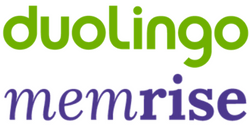RESOURCES
Vetted products and resources to help you live the Gentleman Spy lifestyle.
We value your privacy and security. Your e-mail will never be sold or given out.
BUILDING THE GENTLEMAN SPY BODY
Living the Gentleman Spy lifestyle starts with building your body. Neither a scrawny marathoner, nor an overly muscled bodybuilder, you need a physique built for performance.
Browse below to find ideas, tools, books, and links that will help you forge the physique you need.
Bodyweight Workouts
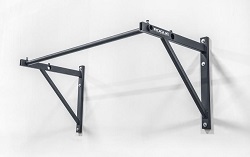
Pullup Bar — In almost any possible workout program, you will need access to a place to do pullups. If you're strapped for cash, the door frame mounted pullup bars work for a little bit, or you can find a tree branch or local park to do pullups. But if you're serious about building a world-class physique, you need to build or buy a quality pullup bar (and/or use the power rack below if you're building a complete home gym — highly recommended).

Rings — Gymnastic rings are a useful and versatile tool in your arsenal. From muscle-ups to pushups or handstands on the rings, these help build tremendous amounts of strength and skill. They are also great for travel or to keep in your car to get a great workout in anywhere — string them over any tree branch, park equipment, goal post, etc. to get in a great workout without having to carry around heavy or cumbersome equipment.
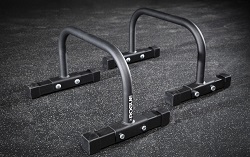
Parallettes — Like the rings, parallettes are a versatile tool. Use them for L-sits, planches, handstands, swing-throughs, and more.
Barbell Workouts
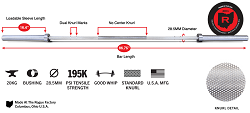
Barbell — At the heart of any real strength workout is the barbell. Like the pullup bar, if you're serious about your training, you owe it to yourself to skip the cheap junk you'll find at Dick's or Academy and go for a high-quality barbell. Rogue Fitness is your one-stop shop here, where they manufacture their own excellent barbells, as well as selling other great brands like Eleiko, Uesaka, WerkSan, and York.

Bumper Plates — After the barbell come bumper plates. These are hard rubber or urethane plates that — unlike the metal plates you're probably used to — are designed to be dropped repeatedly. Whether you're working on deadlifts or olympic lifts that start and end on the ground, or squats where you might have to dump the weight, bumper plates will save your floor and your bar from unnecessary abuse.
Fractional Plates - the bumper plates make up the big changes you'll be making, but 10 lbs. is as light as they go. To get the proper weights for your workouts - especially as you start plateauing and making less progress each week - you'll need fractional (or change) plates.
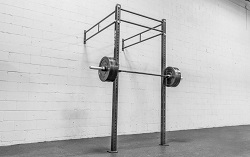
Squat Stands or Power Rack — You can do a lot of work with nothing but a barbell and bumper plates (see Dan John's From The Ground Up program), but to get the most of your programming, you'll want squat stands. A full rack (wall mount or free-standing) is even better and will do everything you could possibly need. It holds the barbell for squats and presses, and provides a measure of safety if configured with safety bars.

Bench — If you're going to bench press — and you should — then you need a bench. You can spend money on an adjustable bench if you really want, but a basic flat bench will do just fine.
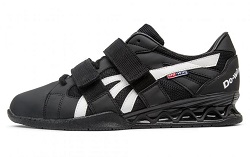
Proper Shoes — Do not lift in cushy running shoes. Your best bet is to lift barefoot when you can and wear good cross-training shoes like GoRuck Ballistic Trainers when you need shoes. Proper weightlifting shoes are great on powerlifting and weightlifting days, and minimalist footwear like FiveFingers can also work well.
Running
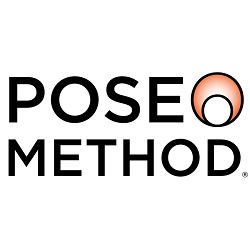
Pose Method — You run wrong. Don't worry, it's not your fault. Somewhere between childhood and adulthood, most people forget how to run properly. The Pose Method will re-train you to run as far and as fast as you want, without the risk of injury common to most runners. Start with this free video series, then buy the book or take the course (marathon or speed training) to get more in-depth information.

Proper Shoes — Ditch the cushioned running shoes you have (if you have them) and buy something more minimalist. You could go barefoot of course, or wear something like Vibram FiveFingers, but there’s no need to go that extreme. Merrell, New Balance, and others make excellent models to choose from.
Swimming
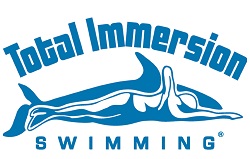
Total Immersion — Swimming isn't a natural skill for most, but it can be learned quickly and efficiently. If you are not already an excellent swimmer, you should go through the Total Immersion training program. Start with either TI's Udemy course, the downloadable self-coaching videos, or their online Academy. If you want more, register for in-person training.
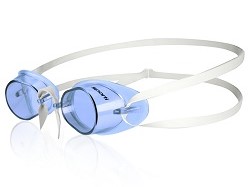
Goggles — You need some type of goggles (or mask) to see underwater. Interestingly, the best choices are at opposite ends of the spectrum.
Swedish goggles (Swedes) are the underrated king of swim goggles. These are as basic as goggles come—you even have to put them together yourself—but they are so good that even Speedo had to license the design so that their sponsored athletes wouldn't be in breach of contract when they refused to wear anything else. At $4/pair and arguably superior to ever other goggle available, you should give these a try before spending money on more expensive goggles.
For those who don't want to deal with the Swedes or are convinced they need something more comfortable are the AquaSphere Kayenne. These are incredibly popular with triathletes and open water swimmers, for good reason.
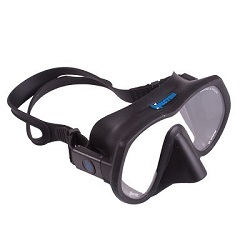
Mask — For those who are interested in snorkeling or diving, a good mask is paramount; goggles don't have the nose pocket necessary to equalize pressure at depth. Fit is key — if the mask doesn't fit, nothing else matters. You want a low-volume mask that is easy to clear and provides good visibility. Photographers, technical, and cave divers prefer black skirts which block out unnecessary light, keeping your focus where it needs to be — on stuff you can really see. The Halcyon H-View, Scubapro Frameless, and Atomic Frameless are excellent options; one of those three will almost certainly fit your face perfectly.
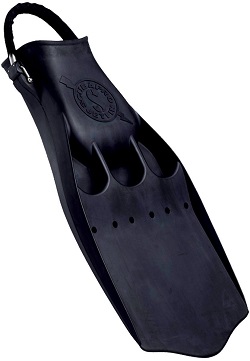
Fins — As soon as you've gotten good without fins, you'll want to start adding swimming with fins to your training regimen. Swimming with fins will help work on strength and endurance while developing additional overall capacity. You can go for an easy snorkel over a reef, a 5-mile swim using the combat swimmer stroke, or anything else in between.
Because the focus here is on overall capacity, not competition swimming efficiency, skip the "swim fins" or "duck feet" go with the real deal.
Scubapro rubber full foot fins — perfect for beginning fitness swimming and easy snorkeling trips.
Scubapro Jet Fins — If you're a scuba diver, or plan to be, skip the gimmicky crap like split fins or Force Fins and go right for the real deal preferred by tech, cave, and professional divers worldwide: Jet Fins.
If you opt for the Jet Fins, don't forget you need neoprene booties too.
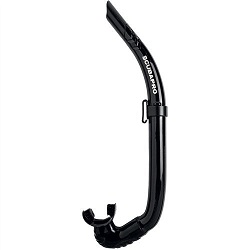
Snorkel — Whether you plan on training for BUD/S, doing a 5k open water swim with fins, scuba or freediving, or just going snorkeling in the Bahamas, you'll need a snorkel. You don't need purge valves or dry chambers. Keep it simple with a basic, flexible snorkel. It's minimalist design is best for free diving, and you can take it off, fold it up, and put it in your pocket when you're scuba diving and don't need it.
NOTE: Gentleman Spy recommends Extreme Exposure as your one-stop-shop for dive gear. Use this link to get 10% off your order.
Diet
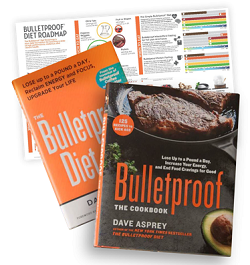
Bulletproof — By now, you've probably heard of Bulletproof Coffee, and if you haven't tried it yet, you owe it to yourself to get on board. But putting butter and coconut oil in your coffee isn't Dave Asprey's only contribution to living an upgraded life. His Bulletproof Diet book and cookbook are excellent resources. Other Bulletproof products, from supplements to the whole body vibration plate, are worth checking out.
Robb Wolf — When you hear the term "Paleo Diet," Robb Wolf is who you should be thinking of. Both of his books, The Paleo Solution and Wired To Eat, are excellent resources, as is his site, RobbWolf.com.

Mark Sisson — Mark Sisson is a former professional triathlete turned paleo-evangelist — "Primal" in his terms. His Primal Blueprint, 21-Day Total Body Transformation, and Primal Blueprint Cookbook are good on their own, and work in tandem to give you everything you need to upgrade your diet and body.
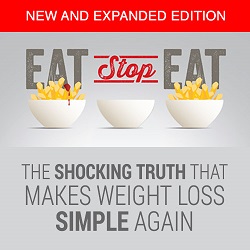
Intermittent Fasting — Paleo, Primal, Bulletproof, Slow-Carb is the diet of choice, but to take your results — and health — to the next level, intermittent fasting (IF) is what ties it together. You'd never find Bond or Bourne carrying around Tupperware with their 5-7 meals per day inside, and you shouldn't either. Brad Pilon's Eat Stop Eat will show you how to use IF to cut cravings and build resilience while eating what you want, when you want.

Cookbooks — "Cookbooks" may be a bit of a misnomer. More than books of recipes, you need to learn how to cook well. Two excellent starting points are Alton Brown's I'm Just Here For The Food and Tim Ferriss' 4-Hour Chef.
For date nights, social interaction, and skill building, check out cooking classes in your area. Sur La Table, Williams Sonoma, and 3+ star restaurants are good places to inquire.
Other Workout and Fitness Ideas
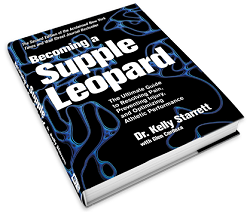
Becoming a Supple Leopard / The Ready State — Whether it's because of your training or just sitting at a desk all day, you're bound to have aches and pains. Here's what most people miss: you can and should be able to fix yourself. Kelly Starrett will show you how. Get the book and check out TheReadyState.com.
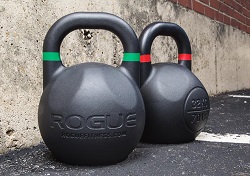
Kettlebells — While not directly included inside the Gentleman Spy workout programs, kettlebells can be a useful tool. Whether you use them for conditioning, strength, as part of Crossfit or Systema workouts, these are a great addition to any fitness arsenal.

Grippers — Grip training tools, specifically the Captains of Crush (CoC) grippers, are another excellent addition to your training equipment. Building your grip strength will help with weightlifting, shooting, MMA, and more. Do not confuse the cheap grippers you find at your local sporting goods store with quality tools like the CoC.
DEVELOPING YOUR GENTLEMAN SPY STYLE
James Bond is first and foremost a military man. Jason Bourne, Jack Bauer, Jack Ryan, Ethan Hunt, and real spies around the world all have their roots in the military. They wear their clothes like a uniform, as should you.
To live a life of adventure, your wardrobe must be functional and fashionable. From hitting the beach to the high-stakes poker games, you should be dressed for the situation.
Browse below to curate a stylish, interchangeable wardrobe that will ensure you always look your best.
The Suit
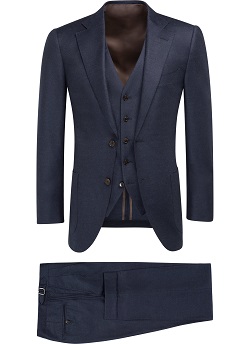
The Suit — The suit is the pinnacle of menswear: the modern gentleman's suit of armor. Whether it's a tuxedo for a black-tie event, the suits you wear to the office every day, linen for a beach wedding, or a single navy or charcoal "just in case" suit for the man who rarely needs one, every man needs at least one perfectly fitted suit. While fashions change, a well-designed and good fitting suit is timeless.
Start with charcoal grey and navy blue for your first two suits. Favor timeless style and fit over the crazy "in style" fashions.
Your choices here are almost endless, with good options ranging from $200 to $10,000. Tom Ford, Brioni, and Anthony Sinclair have all dressed 007. Ralph Lauren, Suit Supply, and Brooks Brothers make quality, classic suits that won't break the bank, and Combatant Gentlemen makes quality suits for under $200.
Finally, Grayman & Company specialize in bespoke suiting for the man of action. Features include an action back so you can move, shoot, fight, and drive, cut-resistant sleeves, RFID shielding, holster liners, and pockets for extra magazines, medical kits, etc. Grayman & Company is the ultimate choice for those with the means.
Dress Shirts
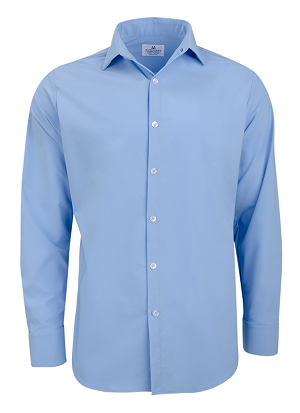
Dress Shirts — While your choices are endless here, to exude the style and class of the Gentleman Spy, keep things simple: perfect fit, flat front, no pocket, no button-down collars, always pressed. Clean and refined.
The shirt must fit perfectly, not left blowing in the wind or billowing around the waist like most off the rack department store shirts. Turnbull & Asser is James Bond's choice, and custom shirting is more accessible than ever with companies like 5th & Lamar, Proper Cloth, Brooks Brothers, and Nordstrom offering athletic cut or made to measure shirts at good prices.
While cotton is the norm, Mizzen+Main is Gentleman Spy's pick for comfortable, stylish shirts in technical fabrics that stretch, move, wick moisture, look, and feel better than cotton ever will.
Casual Clothing
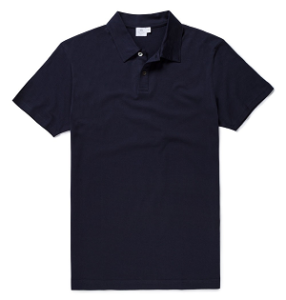
Polo Shirts — The gentleman's alternative to t-shirts, the fitted polo is versatile, stylish, and comfortable. The Sunspel polo is 007's choice, with other good options available from Orlebar Brown, Ralph Lauren and Lacoste. As with the dress shirts above, cotton isn't the only choice anymore and there are excellent choices in merino wool or other technical fabrics from companies like Mizzen+Main, Wool & Prince, and others.

Sweaters — When the weather gets cool, a quality sweater — especially cashmere — is a great investment. Crew neck, mock-turtle neck, or V-neck is your choice, but if you’re looking to wear one over a dress shirt and tie, opt for the V-neck. Worn alone, over a dress shirt, or underneath a blazer or casual jacket, the cashmere sweater is an essential piece of the gentleman’s winter wardrobe.
N. Peal is 007's choice, with other good options from many brands. Smartwool is another standout with merino wool sweaters and shirts that transition from the office to the trail to lounging at home with ease.
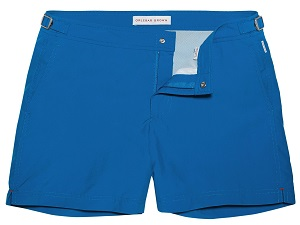
Swim Trunks — If you're living the Gentleman Spy lifestyle, that means hitting the water. Whether it's for a beach holiday, cruising on a yacht, or just workouts in the pool, you need good swim trunks. Orlebar Brown is the standout; they were James Bond's choice in Skyfall, and the tailored fit is exactly what you want. Frescobol Carioca, Mackeene, and Vilebrequin are other great choices that all offer fitted suits in varying lengths to suit any man's body and style.
Footwear
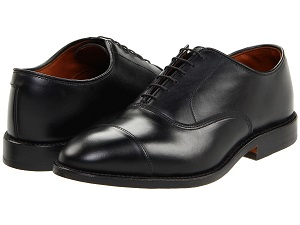
Dress Shoes — If you're going to wear a suit, that means you need dress shoes.
Your first pair of dress shoes should be black Oxfords. A plain cap toe is a good choice that is perfect for business wear and formal enough to do double duty with at a black tie event.
After black Oxfords, a brown pair of semi-brogue Oxfords is a good option that you can wear with any suit color except black, as well as less formal clothes like wool slacks, chinos, and even jeans.
Slip-ons, dress boots, or monk straps all make excellent third choices, based on your lifestyle and environment; slip-ons might be better in Miami while dress boots might be better in New York.
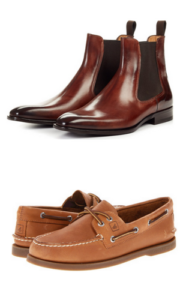
Casual Shoes — You have many styles to choose from for casual shoes, from more stylish and formal monk strap or semi-brogue oxfords, to desert boots, boat shoes, moccasins, espadrilles, and canvas sneakers (Converse or Vans).
Choose a style or two that fits your lifestyle, but remember, to exude 007’s class, you’re looking for something that leans more toward the classy side like dress boots, dark leather or suede desert, Chukka, or Chelsea boots or boat shoes, and less towards the super-casual side like All-Stars, espadrilles, or sneakers.

Socks — First (and this goes mostly for the Americans): you shouldn't be wearing white cotton socks with anything but athletic wear where it doesn't matter. Otherwise, your socks should match your pants (best) or shoes (also fine). Cotton is cheap, but merino wool is king, and Smartwool is the standout. Whether you need dress socks to wear with your suits, casual socks you'll wear with boots and jeans, or specialty socks to run a marathon or go skiing, Smartwool has the perfect pair. Good socks pay for themselves many times over in comfort, foot health, and longevity.
Timepeices
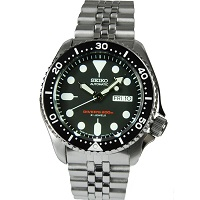
Seiko — If you need a great watch but don't want to spend the money for an expensive Omega or Rolex, look no further than the Seiko SKX-007 . The SKX-007 (and SKX-009, if you want the red and blue "Pepsi" bezel) meets the stringent ISO 6425 criteria for automatic dive watches and has a "luxury" pedigree including an in-house mechanical movement from a respected manufacturer that isn't met again until you spend well over $1,000. And for those that think "it's just a Seiko," remember that even James Bond wore Seiko watches in the movies between 1977–1985.
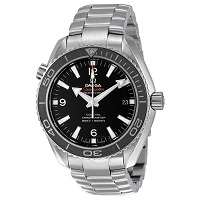
Omega — For some fans, only the real deal will do. If you're looking for 007's current watch, that means Omega. The Aqua Terra, Seamaster, or Planet Ocean have been featured in all James Bond films from 1995–present.
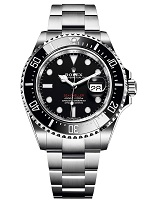
Rolex — Omega might be 007's watch of choice recently, but Rolex is the original. The Submariner and SeaDweller are the reference dive watches against which everything else is judged, and their timeless style is appropriate in every environment. From the original James Bond to the depths of the ocean to the wrists of presidents, CEO's, and style icons, the Rolex Sub is arguably the perfect watch.
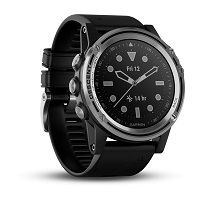
Sports Watches — No "smart" watch will ever exude the day-to-day class and style afforded by a traditional automatic (mechanical) wristwatch. But for the active man of adventure, wrist-top computers with specific feature sets can be useful. Garmin makes the best of the breed in every category.
If you're into hiking, climbing, skiing, mountaineering, etc., the Fenix series is an excellent all-around choice. If you add scuba diving to the list, the Garmin Descent Mk2 has everything that makes the Fenix great, while adding an advanced multi-mode, mixed-gas dive computer.
Accessories
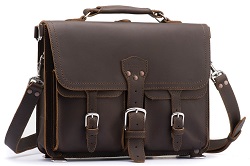
Briefcase — The stylish, grown-up version of a backpack or messenger bag, a good briefcase is essential if you work in a professional environment, and a good idea no matter what. Carry your work materials, computer or tablet, everyday carry essentials, even a pistol and spare magazines without looking out of place or juvenile.

Exuvius Titanium Collar Stays — With dress shirts, you need collar stays. To nail the Gentleman Spy lifestyle, check out the titanium stays that have a thread cutter, bottle opener, and screwdrivers machined into them. These are issued as part of urban SERE — Survival, Evasion, Resistance, Escape — kits to real life spies; they are useful and just plain cool.
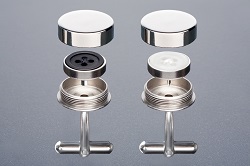
Cufflinks — You have many choices, from silk knots to gemstones, comic characters, world maps, classic options, even handcuff keys, flash drives, or hidden compartments. Your taste, style, and level or formality will dictate the best choices for you.

Pens — Nothing exudes class and style like good handwriting laid down by a beautiful fountain pen. While fountain pens aren't necessarily for everybody, a good pen is your friend. But a warning is in order: steer clear of the "tactical pens;" you're here because you want to be more like James Bond, not Tactical Timmy. If you want a tough pen that writes like a champ and can take a beating, get a simple Parker Jotter instead.
Grooming
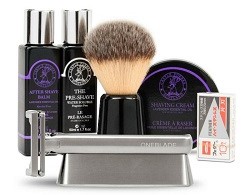
Shaving — Upgrading your shave from a chore to a morning ritual will make sure you start every day looking your best. Use a OneBlade or old-school double-edge razor, with quality shaving cream or soap applied with a brush.
The best way to upgrade your shave without the pain or learning curve associated with double-edge razors is to go right for one of the OneBlade starter kits. The Core kit is superior in every way to cartridge razors and comes with everything you need to get a superior shave. The Genesis starter kit includes the absolute best of everything available, from the razor to the shaving cream, brush, blades, and even blade disposal case.
CULTIVATING THE GENTLEMAN SPY ATTITUDE
The Gentleman Spy is confident, but that is built upon his skill of always knowing what is going on around you and being prepared for any situation or social encounter.
Whether it’s scoping out the lay of the land and knowing where the exits are or seducing the most beautiful woman in the room, your situational awareness and social engineering skills contribute to the self-assuredness you need.
Browse below for books, websites, and information to help you step up your game.
Situational Awareness
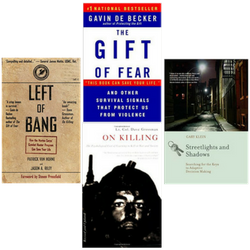
Books — Left of Bang: How the Marine Corps' Combat Hunter Program Can Save Your Life, by Patrick Van Horne and Jason Riley
The Gift of Fear, by Gavin de Becker
Streetlights and Shadows: Searching for the Keys to Adaptive Decision Making (MIT Press) by Gary A. Klein
On Killing, by Dave Grossman isn't directly about situational awareness, but covers related mindset issues that come into play throughout the Gentleman Spy program and lifestyle.

Online Resources — By Patrick Van Horne (author of Left of Bang), CP-Journal.com has more excellent resources including his own online Tactical Analysis Course.
Private Intelligence Organizations — Organizations and think tanks like RAND, Stratfor, Oxford Analytica, OODA, and others offer better analysis and actionable intelligence than any news station does. Scroll to the Information section below for links and to sign up for the free reports from the major players.
Seduction
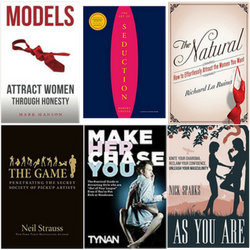
Books —Make Her Chase You by Tynan
Additional Attitude Resources
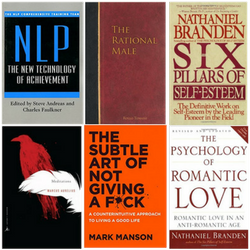
Books — NLP: The New Technology of Achievement
The Rational Male by Rollo Tomassi
The Six Pillars of Self Esteem and The Psychology of Romantic Love by Nathaniel Brandon
The Subtle Art of Not Giving a F*ck by Mark Manson
MASTERING THE GENTLEMAN SPY SKILLSET
What sets the spy apart is that he can take care of himself in any situation. Chasing down a bomb maker in Uganda, fighting multiple assailants, saving the day, winning at the casino – the Gentleman Spy has what it takes to win.
The ultimate Jack of all trades, you may not be the best in the world at any one discipline, but can be better than most in many different arenas.
Exploding pens, ejector seats and machine guns in theAston Martin, or stun guns in his phone – this crap is for the movies.
Browse below for the real-life skills and tools that, when carried and used properly, can save your life or that of others.
Close Quarters Combat
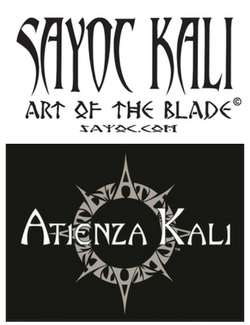
Filipino Martial Arts — “All blade, all the time” is the motto of Sayoc Kali. Most Filipino martial arts like Arnis, Atienza Kali, Eskrima, and Pekiti Tirsia Kali follow a similar methodology by teaching weapons first, then going on to empty hand techniques. With a massive emphasis on blade work, it also covers batons, projectiling (throwing knives or other objects), improvised weapons, and empty hand skills.
A feeder-based system, Sayoc Kali’s basic drills are designed with the aggressor in mind. Sayoc Kali uses transition drills, multi-man drills, training modifiers and target-specific tapping against intelligent, skilled and resisting opponents.
The FMA's in general, and Sayoc or Atienza Kali in particular, earn the highest recommendation as complete combatives programs. If you can't find a school near you, you can try to find a training partner, attend a seminar, and/or order their DVD's.

Systema (Система) Russian Martial Arts – Systema is a Russian martial art that has been adapted for use by Russian Special Operations units and their spy network.
Covering everything from hand to hand skills to knives, guns, and improvised weapons, Systema is focused on natural movement and controlling body levers through pressure point application, striking, and weapons application.
Breathing and breath control are integral to the system, the use of kettlebells is common, and the focus on natural movement generally includes a lot of training in rolling and mobility so Systema is a good choice if you don't have a parkour gym near you.
You can find a school, find a training partner, or get started on your own with the DVD's from Vladmir Vasilev or Martin Wheeler.
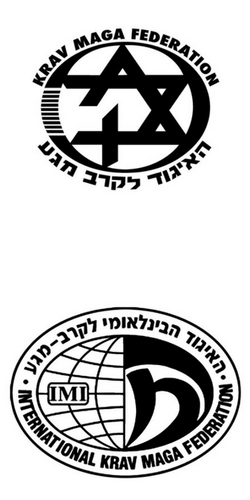
Krav Maga (קְרַב מַגָּע) Israeli Martial Arts — Designed for the Israeli Defense Forces as a system that is easily trained and practiced, Krav Maga training will likely be more accessible for most people than the Filipino Martial Arts or Systema (see note below).
Krav Maga focuses on counterattacking (or preemptively attacking) as soon as possible, and targeting those attacks to the body's most vulnerable points: the eyes, neck, face, solar plexus, groin, ribs, knees, feet, fingers, etc.
Arguably the most aggressive system, it is focused on ending a fight as quickly and efficiently as possible. While KM does include blade and improvised weapons work, these do not account for as much of the program as they do with either FMA's or Systema, so Gentleman Spy recommends KM only as the last resort if you cannot obtain FMA or Systema instruction where you live.
NOTE: Because of Krav Maga's popularity and marketing, do your homework and vet your instructor thoroughly. Lean for training geared towards self-defense, NOT the popular Krav Maga fitness classes.
In general, instructors or schools associated with the International Krav Maga Federation, Israeli Krav Maga Association, Krav Maga Global, and Krav Maga Federation, or those taught by former IDF operatives will be better choices than other options that are often heavily marketed in the US.
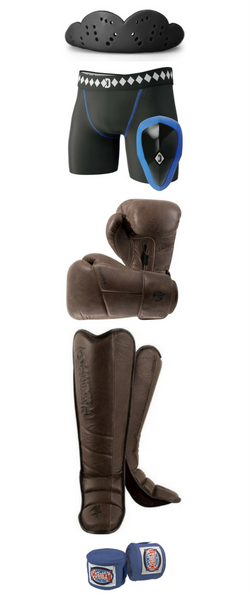
MMA Equipment — MMA training doesn't require a lot, but it does require some basic equipment to get the most out of your training. The list below will get you started.
BASICS
Get these before your first class.
You won't be able to train any contact sports without them:
Mouthguard — If you're just getting started, Sisu, Shock Doctor, Venum, and Damage Control make quality heat-to-fit mouthguards that are inexpensive and excellent. The next step up in both price and comfort is a custom fit mouthguard from your dentist, Impact Custom Mouthguards, or Damage Control.
Cup and supporter — The best options are compression shorts with cup supporter built in, but a simple supporter (jock strap) will do the job in a pinch.
FULL KIT
The rest of the tools you'll need to get everything possible out of your training. You'll probably need everything here within days or weeks of beginning a full MMA program.
Hayabusa, Revgear, and Venum all make a full range of MMA equipment so links are included for all three when applicable.
Boxing Gloves — standard 16ox heavy gloves (Hayabusa, Revgear, Venum, Cleto Reyes).
Boxing Headgear — may or may not be strictly necessary depending on where and how you train, but can help protect against cuts, bruises, and the occasional concussion (Hayabusa, Revgear, Venum).
Shin Guards — the standard versions that strap outside your leg may be fine, or opt for the MMA/grappling versions that are contained within a sheath that encases your whole leg (Hayabusa, Revgear, Venum).
Knee Pads — fall somewhere between "good idea" and "must have" for rolling; Asics and Brute are the top choices.
Hand Wraps — the elasticized versions are a great upgrade from basic cotton.
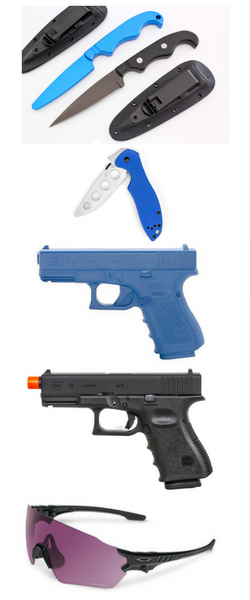
Combatives Equipment — Your combatives training may or may not require specialized equipment. Unlike MMA, Muay Thai, or BJJ, you'll probably train in street clothes. Training blades, guns, eye protection, sticks, and more may or may not be provided by your instructor.
Training Blades — Assuming you carry a knife (you do carry a knife, right?), it's best to have training blades that are as close as possible to your live blade. Emerson, Spyderco, and Kershaw all offer training versions of their folding knives. AMTAC Blades, Atienza Kali, Tuhon Harley Elmore/Headhunter Blades, Dynamis Alliance, and others offer packages that include a live blade, matching training blade, and sheath — all designed by people who use and carry these tools every day.
Blueguns — If you're going to regularly use an inert training gun, it should be as close as possible to the gun(s) you carry for real. Use this in training with the same holster and carry method you use every day. (Sig P320, Sig P365, Glock 19, Glock 43, S&W M&P9, M&P Shield)
Airsoft Training Guns — You may have the option to engage in force on force training using airsoft weapons. If you can do this, you should do this. (Sig P320, Glock 19, S&W M&P)
There is a big difference between using airsoft as an effective training tool and "playing airsoft." Know the difference. Practice accordingly.
For those with kids, airsoft can be a great way to introduce your kids to shooting and gun safety, providing an outlet to shoot and train without the time constraints, expense, or noise of going to a real shooting range. As above, beware the distinction of using airsoft as a training tool versus "playing airsoft."
Eye Protection — This may or may not be necessary for your day to day training—some trainers will require it for blade work and some won't—but is absolutely essential for any airsoft work. Oakley, Smith, Revision, and more all make good eye-pro, but if you're going to use airsoft for force-on-force training, you should invest in a full-face mask.
Guns & Shooting
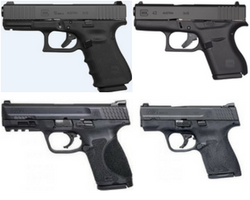
Pistols — James Bond's Walther PPK might be the iconic Gentleman Spy's gun, but there are better choices available today. Purchase a Sig P320, Glock 19, or S&W M&P9 and get training.
If you need a smaller pistol for concealed carry, the Sig P365, Glock 43X, or M&P9 Shield are your top choices.
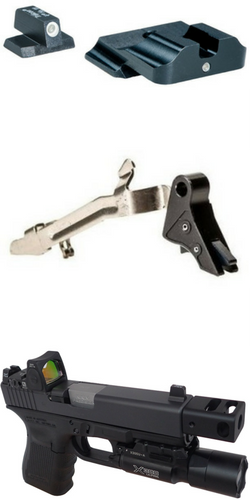
Pistol Parts and Accessories — The Glock, M&P, and Sig pistols are pretty good out of the box. But they can be made better with certain choice accessories.
Sights — Most stock sights suck, especially Glock's. Replace them with quality metal versions. For night sights, Warren Tactical is an excellent option (Glock 19, Glock 43, M&P). Kyle Defoor's sights from Ameriglo are a good, basic option.
Holster — Whether you're going to carry your pistol every day or just attend the odd training class, you'll need a holster (or few). For daily carry, you want an inside the waistband holster. Tenicor, Raven Concealment Vanguard 2 or Eidolon, T.REX ARMS, and HSP Incog are all good choices.
Be smart. Some upgrades are worth your while, but $2,000 in training and ammunition will make you a far better shooter than $2,000 in pistol upgrades.
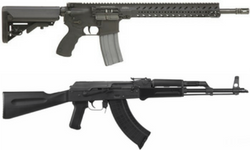
Rifles — The AR-15 is the most widely used semi-automatic rifle in the English-speaking world and it's variants are in use by almost every western military in some capacity. Colt, Fabrique Nationale d'Herstal (FN), Knight's Armament (KAC), Heckler & Koch (HK), Lewis Machine & Tool (LMT), and Sig Sauer all produce quality rifles for various military contracts. Daniel Defense, Bravo Company Manufacturing (BCM), LaRue Tactical, Noveske Rifleworks, and others produce exceptional rifles that have been widely adopted by law enforcement and civilians.
The AK (-47, -74, and variations) is the other major option. If you travel extensively to the former Soviet bloc, Africa, or the Middle East, learning your way around AK's is a good idea. Rifles imported or manufactured by Arsenal, Century, Kalashnikov-USA, or smaller shops like Rifle Dynamics or Krebs Custom that specialize in the AK platform are all good choices.
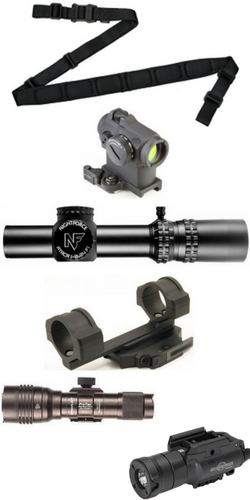
Rifle Parts and Accessories — A modern fighting rifle needs three things: a sling, an optic, and a light.
Sling — The sling should be an adjustable two-point like the Magpul MS-1, Proctor Sling, VCAS, VTAC, or similar.
Optic — The best bets for optics are red-dot sights like an Aimpoint or EOTech for home defense, or low-power variables like 1–6x or 1–8x for an all-around optic. Low-power variables are becoming better and more popular with models from Leupold, Nightforce, and Vortex dominating 3-gun competitions as general purpose optics that work as well at 5 yards as they do at 500 yards.
Scopes need mounts; Badger Ordinance, Bobro Engineering, LaRue Tactical, Scalarworks, and others make good choices.
Light — Modlite is king, and the Surefire X-series or Scout, or Streamlight TLR or ProTac are also excellent. The brighter, the better.
Like with the pistols, you can go as far as you want here. You could easily spend $10k+ on a single rifle and accessories, but a $1,500 rifle, a training class, and a few thousand rounds of training ammunition is a much better initial investment.
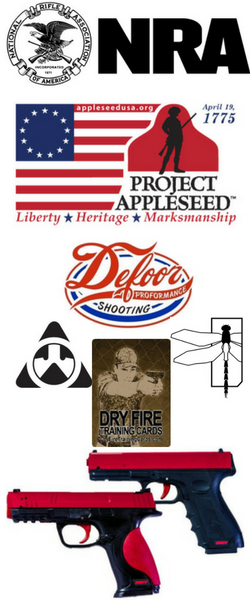
Training — Owning guns without proper training and practice makes you a liability, not an asset. If you're going to embrace this aspect of living the Gentleman Spy lifestyle, you absolutely must have recent, proper training.
NRA — Politics aside, the training put on by NRA instructors is an excellent and inexpensive way to get started. Whether you "grew up shooting" but haven't had formal instruction in a long time, or you're new to guns and need the basics, getting in touch with a local NRA instructor is where you should start.
Appleseed — Project Appleseed, put on by the Revolutionary War Veterans Association, combine a weekend of high quality rifle instruction interspersed with a great history lesson and storytelling. Appleseed shoots are inexpensive for everybody, and highly discounted for children under 18, military, law enforcement, and the disabled.
Defensive [Pistol/Rifle/Shotgun] — defensive/practical/combative pistol, rifle, or shotgun classes are often held at local ranges. These are the bridge between the basic NRA instruction and more "real life skills" like drawing from the holster, moving and shooting, multiple targets, etc.
High End Classes — these are the courses offered by Constellis (formerly Blackwater), Costa Ludus, Gunsite, Haley Strategic, ITI, Kyle Defoor, Rifles Only, Rogers Shooting School, Sentinel Concepts, the Sig Sauer Academy, Suarez International, Thunder Ranch, and other top-rated trainers. Between travel, lodging, and ammunition, these may be significantly more expensive than training at your local range, but are worth every penny. If you get the chance to attend a course with any top-level instructor, jump on it.
While formal training and live fire practice at the range is essential, you can and should train on your own at home. Regular dry fire practice, weapons manipulations practice, and using a SIRT training pistol are free or inexpensive ways to get better fast and maintain the skills you've learned at other courses.
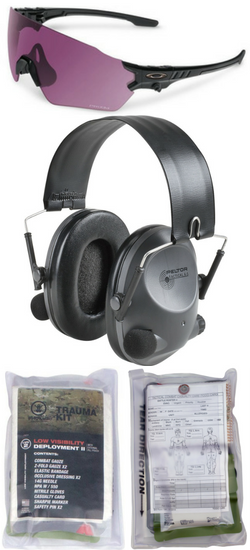
Protective Equipment — If you're going to own a gun and shoot regularly, you need more than the absolute basics. Good eye protection, ear protection, cleaning equipment, and more will protect you.
Eyes — Eye protection for shooting does not mean your regular prescription glasses or expensive and stylish sunglasses. You want eye protection rated to ANSI Z87.1, EN166, or MIL-PRF-31013. ESS, Oakley, Smith, Revision, and Wiley X are all good options.
Ears — Don't be an idiot and shoot without ear protection. Preferably double, active protection that protects your hearing while allowing you to communicate and hear range commands. Surefire Sonic Defenders underneath electronic earmuffs is the best cost-effective option. If money is no object or you do this professionally, the Ops-Core AMP headset with NFMI earplugs is the absolute best.
Trauma Kit — Accidents happen, and gunshots require more than a basic first aid kit. Do not go to the range or training course without a trauma kit that includes a tourniquet, hemostatic dressing, and trauma bandage. You could make your own but we recommend the kits from Phokus Research Group; use code GENTLEMANSPY for 10% off your order.
Medical Training & Equipment

First Aid / CPR / AED — If you have not had recent advanced medical training, start with a basic First Aid/CPR/AED course from your local Red Cross/Red Crescent chapter. These courses are inexpensive, regularly scheduled almost everywhere, and only take a few hours. Schedule your course now.
Red Cross Intermediate Training — The next step up, also available via the Red Cross are two intermediate courses. Responding to Emergencies is a 30 hour course designed for high school and college students (but likely available to the general public), and Emergency Medical Response is a 51 hour course that is the first step in professional training towards becoming an EMT.
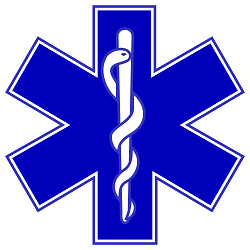
Emergency Medical Training —Emergency medical training is generally broken up into four distinct levels: Emergency Medical Responder, Emergency Medical Technician, Advanced Emergency Medical Technician, and Paramedic.
While Paramedic and even Advanced EMT certification might be overkill for most people, those living a very adventurous life will likely benefit from obtaining their EMR or EMT certification. Most local community colleges will have easily accessible programs you can join, or see the Remote Medical section below.

Remote Medical International — While any Red Cross and/or basic EMT program will increase your skill set, the programs from Remote Medical International are a step above in every way.
Recommended courses include the 2 and 3-day Wilderness First Aid and Remote First Aid programs for those needing basic skills. The next step up is either Wilderness First Responder (9-10 days onsite) or Hybrid Wilderness First Responder (20-30 hours homework before class; 5 days onsite).
For those who need the best EMT programs available, the Remote EMT (26 days onsite) and Hybrid Remote EMT (70 hours homework before class; 12 days onsite) will give you not just basic EMT skills but include more advanced skills like antibiotic therapy, catheterization, childbirth, IV administration, suturing and stapling, and more.

Tactical Combat Casualty Care (TCCC) — TCCC and TECC (Tactical Emergency Casualty Care; the civilian counterpart to TCCC) were borne out of the special operations medical communities. TCCC and TECC standards are designed to deal with the three killers on the battlefield, terrorist attack, or active shooter scenario: extremity hemorrhage, tension pneumothorax, and airway obstruction.
Providers for this type of course vary widely, and training can often be coupled with other shooting classes. Many folks will run their own curriculum, but you'll want one that covers at least the TCCC-AC (Tactical Combat Casualty Care - All Combatants) or TECC guidelines. To find a provider, your best bet it to Google "TCCC-AC course near me" or search NAEMT's course directory.
A new option worth checking out is the online learning platform DeployedMedicine.com, part of a new research and development activity sponsored by the Defense Health Agency.

Personal First Aid Kit — This is a small, basic first aid kit you can have on or near you at all times. These kits have the usual supplies like adhesive bandages, antiseptics, and painkillers, with better kits incorporating additional supplies like butterfly closures, gauze, wraps to immobilize limbs, and more.
Skip the drugstore kits and go with Adventure Medical Kits or build your own. AMK's Ultralight & Watertight series (.5, .7, or .9) are good options that can be supplemented with additional or upgraded supplies if necessary.

Advanced First Aid Kit — The advanced first aid kit is a bigger and more complete version of the personal kit. This is better suited to keep in your home, vehicle, or office, but is also what you'd be looking at for larger groups or extended trips outdoors or abroad.
These will incorporate more of everything from the personal kit, and add stuff like CPR face shields or masks, SAM splints, EMS shears, trauma pads for more severe bleeding, and other specialized tools you may require.
Adventure Medical Kits' Ultralight & Watertight PRO is a good choice for outdoor use.
AMK's Mountain Series Explorer, Guide, or Mountaineer are good choices to keep in your vehicle and office.
For home use, building your own kit or supply cabinet is a good idea. You can include all the normal first aid kit supplies, as well as adding additional tools like a quality thermometer, blood pressure cuff, stethoscope, otoscope, irrigation syringe, and headlamp — all supplies that can come in handy, especially for those with health problems, children, or both.
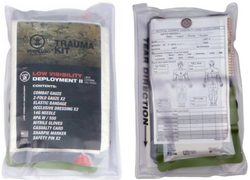
Trauma Kit — Unlike the normal first aid kits above, the trauma kit isn't designed for "normal/daily" use. It's sole purpose is to save a life by controlling the three major killers on the battlefield, active shooter scenario, or major disaster: extremity hemorrhage, tension pneumothorax, and airway obstruction.
Instead of band-aids and OTC meds, the most basic kits will contain a tourniquet, hemostatic dressing, and compression bandage, with more complete kits including a nasopharyngeal airway, chest seal, and decompression needle.
Because of the expected use of these kits, keep them intact and separate from your daily use first aid kits. You can build your own, but we recommend the purpose-built kits from Phokus Research Group; use code GENTLEMANSPY for 10% off your order. Don't forget to add the tourniquet if it's not included.
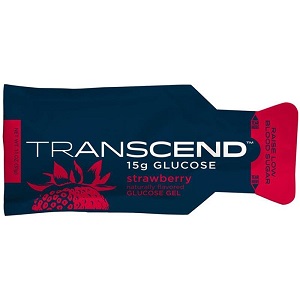
Glucose — If you or your loved ones are diabetic, you already know you should already have this. But even if not, diabetic hypoglycemia is one of the most common medical emergencies in the US that is easily treatable with a few dollars worth of glucose which is an easy addition to any medical kit.
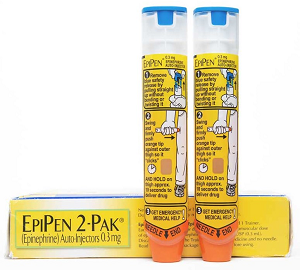
Epinephrine auto-injector (Epi-Pen, Auvi-Q, etc.) — Used to treat anaphylactic reactions (life-threatening severe allergic reactions). These are a relatively easily obtainable and inexpensive insurance policy.
NOTE: this is a prescription-only asset, so talk to your doctor.
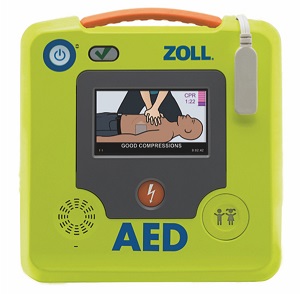
Automated External Defibrillators (AED's) — If you or your loved ones have cardiac issues, or you work or play in fields where injury could result in heart problems, an AED may be a lifesaver. Available in automatic, semi-automatic, and professional BLS versions, the Zoll AED 3 is the best all-around AED for those who live, work, or recreate at the extremes.
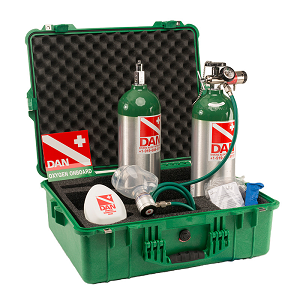
Emergency Oxygen — If you or your loved ones have any medical condition where supplemental oxygen could be beneficial, or you scuba dive where oxygen is a necessary treatment for decompression illness (DCI), you should have an oxygen kit handy. For the divers, get your O2 kit from Divers Alert Network (DAN).
Driving
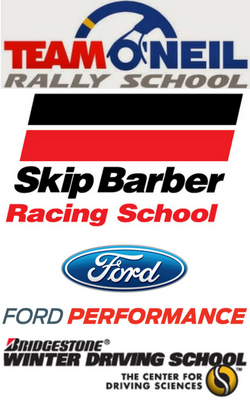
Driving School — Driving is the most dangerous, most common thing that you do every day, but very few ever do any training beyond their first drivers education course. You will spend hundreds or thousands of hours per year, every year, for the rest of your life, behind the wheel, so it pays to become the best driver you can.
With courses ranging from half-day instruction to 5+ day race schools, places like Allen Berg, Bertil Roos, Bondurant, DirtFish, Simraceway, Skip Barber, Team O'Neil, The FIRM, and most race tracks will have some type of training that is close enough and affordable enough that you should be able to upgrade your skills without breaking the bank.
If your daily driver is a luxury or high-performance vehicle, excellent options include schools and programs from Aston Martin, Audi, Acura, BMW, Cadillac, Ford Performance, Jaguar, Lexus, Lotus, Mercedes, and Porsche.
Other standouts include the Bridgestone Winter Driving School or Team O'Neil Winter Driving School if you regularly drive on snow and ice, or specialty Personal Security or Tactical Mobility training offered jointly by Team O'Neil and the Sig Sauer Academy.
Language Learning
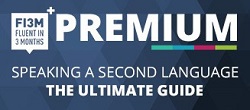
Fluent in 3 Months — For the aspiring polyglot, Benny Lewis' Fluent in 3 Months Premium is a comphrehensive resource showing you how to learn languages. Many languages.
Included are an 8-part Speak From Day One course, the 125 page Language Hacking Guide, interviews, video tutorials, immersion resource kits for 13 languages, conversational connectors for 24 languages, and more.
If you're serious about language learning, Fi3M is one of the best investments you can make.
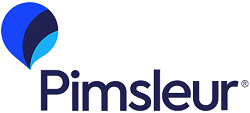
Pimsleur + Text — If you want to acquire a new language with the least possible mental bandwidth, the easiest way to do that is a combination of Pimsleur audio lessons with supplemental reading.
30 minutes a day of listening to Pimsleur, supplemented with the Lonely Planet phrasebooks and Teach Yourself books will give you a basic competence in your target language in a couple of months.
This won't take you as far, as fast, as Fluent in 3 Months, but it is a proven and easy method to develop a new language capacity fairly quickly.
Parkour

Parkour Shoes — Parkour doesn't require much special equipment, but good footwear helps. If you have quality, minimalist running shoes like Merrell or New Balance, you're already good to go. Some folks swear by Vibram FiveFingers, and the Evolv Cruzer, Know Obstacles (KO), Onitsuka Tigers, and Take Flight Ultras are all highly regarded in the parkour communities.
Climbing
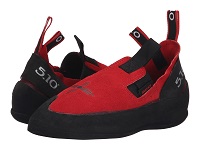
Climbing Shoes — If you're going to get into climbing, your street shoes aren't going to cut it; you need the proper footwear. Tight fitting, with "sticky" rubber soles that give better grip and traction on the rock. Excellent choices are the La Sportiva Genius or Katana Lace as the best all-around climbing shoes on the market, and the Five Ten Anasazi Moccasym slip-on for beginners or comfortable gym work.
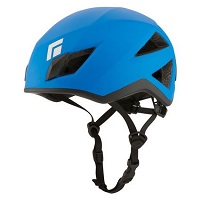
Helmet — A lightweight foam helmet like the Black Diamond Vector is good for climbing and mountaineering, while a slightly heavier and more durable helmet like the Black Diamond Half Dome or Petzl Elios will do just about anything you need from an adventure helmet, from climbing and mountaineering to skiing to caving.
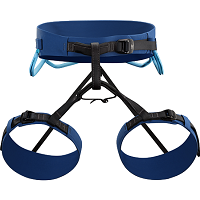
Harness — For any climbing other than bouldering, you'll need a harness. Top choices include the Arc'teryx FL-365 and Black Diamond Chaos for pure rock and gym use, and the Arc'teryx AR-395 or Black Diamond Couloir if you think that alpine, ice climbing, or ski mountaineering might be in your future.
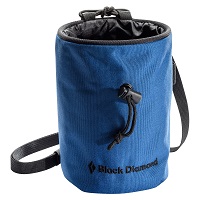
Chalk — Sweaty hands will get you nowhere on the rock. Climbing chalk, kept in a chalk bag attached to your harness will keep your hands dry and in good shape for the climb.
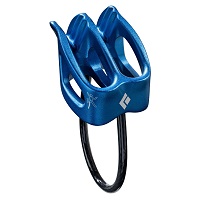
Belay device and locking carabiner — The carabiner attaches the belay device to your harness and allows you to keep whoever is climbing from falling. The most common versions are the Black Diamond ATC (preferred by many climbers) and the Petzl Grigri (most common in climbing gyms).
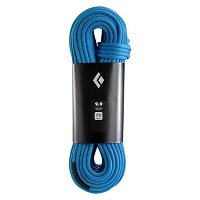
Rope — A 70 meter length of 9.2–11mm dynamic nylon kernmantle rope is what you’ll use for climbing. Non-dry rope is fine for basic sport or trad climbing. If you expect to get into ice climbing or mountaineering, you should opt for dry rope that has hydrophobic coating on the sheath and/or core to prevent moisture buildup.
Poker & Gambling
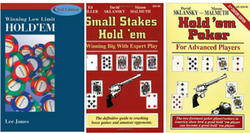
Poker Books — Winning Low Limit Hold'em by Lee Jones
Small Stakes Hold’em: Winning Big With Expert Play by Sklansky, Miller, and Malmut
Hold’Em Poker for Advanced Players by Sklansky and Malmut
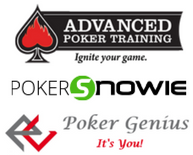
Poker Software — Advanced Poker Training, Poker Genius, and Poker Snowie are all highly rated. Look at all of them, pick whichever one seems like a good fit, and get practicing.
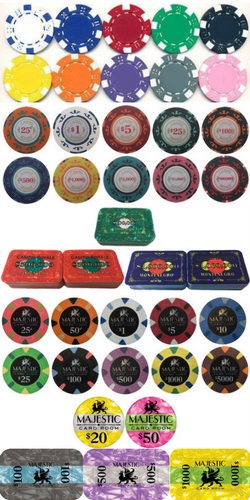
Chips — Whether it's playing with the kids, hosting a weekly poker night, or getting ready to play in the casinos, you'll want poker chips. A set of 300-500 chips is the way to go unless you're hosting a very large home game or tournament.
The cheapest plastic sets are better than nothing, but the slightly upgraded "clay composite" chip sets are worth the small investment for a much better experience.
The next step up are the nicer clay composite chips (usually with a metal insert for weight) like the Monte Carlo or Mint sets.
If you take your poker seriously and want some of the best chips you can find outside of a casino, invest in clay chips. The best value for your money will be the Milano or Majestic chips.
For the die-hard James Bond fans, check out the Casino Royale chips and plaques.

Table — A specialized poker table or table top will give your best experience.
If you only occasionally play for fun, a folding felt table cover is an easy and inexpensive option.
Even better is a dedicated lightweight folding poker table. When set up, it's an excellent full size poker table, but you can fold it up and put it away when you don't need it.
Other Cool Stuff
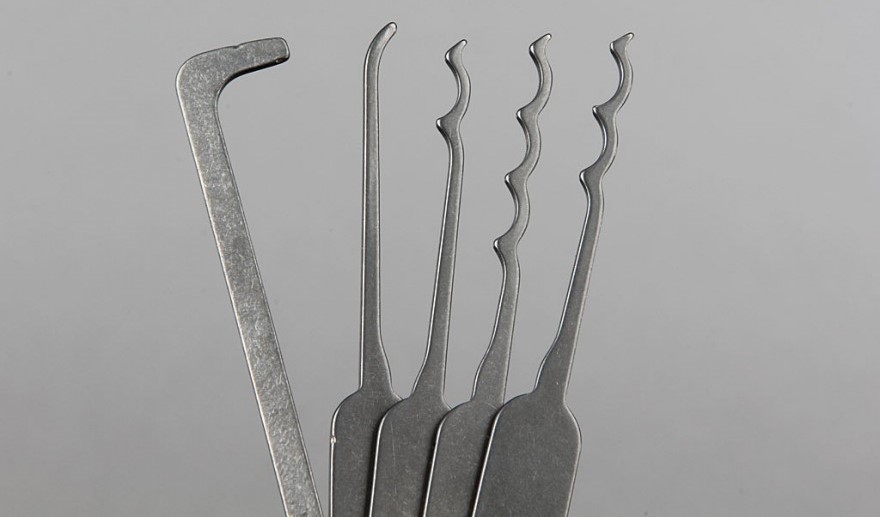
Lock Picks — Lock picking isn't just a tool for the spy movies, but a surprisingly valuable everyday skill set. Don't waste your time with the old-school lock pick sets; they're too big to be carried regularly which negates their usefulness. The Bogota entry tool sets from SEREPick or ITS Tactical are the way to go. Whether you go with the Bogota Pi, Entry Card, or SEREPick Urban Security and Evasion kit, you'll have high quality tools that you can carry with you 24/7 to save the day.
Going beyond traditional lock picks, you can also pick up Quick Sticks, an EZ Decoder, handcuff shims, hideaway handcuff keys, and more to give yourself a complete kit of entry and escape tools.
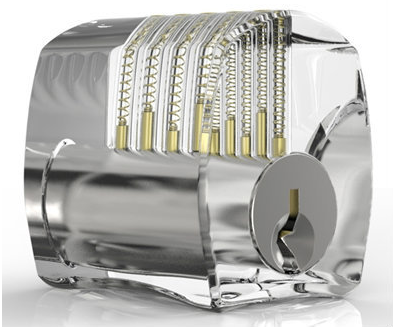
Practice Locks — Lock picking practice results in wear, tear, and possible breakage of locks. Meaning, don't practice on your own front door or in-use locks. Get a practice lock at the bare minimum. Better yet, get the full set of practice locks with standard, spool, and serrated pins; a practice combination lock, and anything else you want to defeat. If you want to go a bit further, check out ITS Tactical's video on building a lock picking practice station.

Scuba Diving — Not directly covered inside the Gentleman Spy program, few things evoke the sense of refined adventure like scuba diving.
While PADI may be "the way the world learns to dive," there are much better options available, with Global Underwater Explorers at the top of the list. Explorers and conservationists as much as educators, GUE training will improve your diving in every way. You can begin diving the right way, right from the start with their Rec 1 program, improve your existing skill set with GUE Fundamentals, or take up cave, technical, and rebreather diving from some of the most avid diving explorers in the world. Whether you're already a scuba diver who wants to get better, or you want to get started the right way, locate a GUE instructor near you (or in an area you want to visit), and sign up for a class.
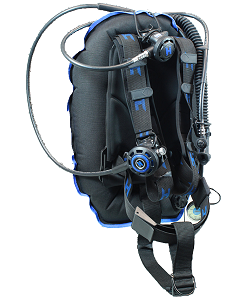
Scuba Gear — To get the most out of your diving, you'll want to purchase your own gear. Instead of the jacket-style BCD and octopus regulators you probably learned with, switch to a backplate and harness style BCD, single- or double-tank wing, and regulator system where your primary regulator is on a 5-7' hose and your backup regulator is on a bungee'd necklace. With this configuration, you will have better trim, stability, and control in the water, with enhanced capability for emergency responses, and an equipment platform that is scalable from the easiest single-tank reef diving to the most demanding multi-stage, rebreather, DPV cave diving in the world.
NOTE: Gentleman Spy recommends Extreme Exposure as your one-stop-shop for dive gear. Use this link to get 10% off your order.
LIVING THE GENTLEMAN SPY LIFESTYLE
Everybody thinks that living like 007 is all about the hot cars, hotter women, and living the life of adventure. And it can be. But there's more to it. Living the gentleman spy lifestyle means living the best life you can.
Information

Private Intelligence Organizations — Private intelligence organizations and think tanks like RAND, Strategic Forecasting (Stratfor), Oxford Analytica, and OODA will give you not only the news, but comprehensive analysis of what happened, why it happened, and what it means going forward.
Sign up for the free subscriptions here:
RAND: go to RAND.com and register for an account. Once you've registered, you can sign up for RAND Policy Currents (weekly), RAND Review (six times a year), and special reports from RAND divisions, Health Quarterly, policy updates, congressional updates, and more.
Stratfor: go to Stratfor.com. Click the "Sign In" button — there's a link there to register for free access. Once you've registered, you'll receive an e-mail to sign up for The Brief, a tri-weekly newsletter highlighting major events and trends, as well as a link to read their annual forecast, the big-picture evaluation of the upcoming year. The Stratfor Horizons blog is also good reading.
Oxford Analytica: sign up for the Weekly Brief (sent every Friday) first. You can also request trial memberships to their Daily Brief and Global Risk Monitor subscription analysis services.
OODA Loop: sign up for the OSINT Daily newsletter. Also check out their cool concepts and cool quotes pages.
Other good options include Matt Devost's Global Frequency newsletter (sent every Sunday), and Bruce Schneier's Crypto-Gram newsletter.

CIA Publications — For all the good and bad it does in the world, the CIA does put out useful and detailed publications, especially if your job or your life revolves around international travel, news, politics, or business.
The CIA World Factbook gives 2-3 page summaries of the demographics, geography, communications, government, economy, and military of 267 countries and international entities.
World Leaders, also known as Chiefs of State and Cabinet Members of Foreign Governments will give you the rundown of virtually all government leadership in a given country. Kings, Queens, Presidents, Prime Ministers, Chancellors, Secretaries, Ministers, Ambassadors, and more are all covered.
Whether you're traveling, preparing for a business meeting, or getting ready for a social event, a little time brushing up on the what's what and who's who is a good idea.
UPGRADE YOUR LIFE! LIVE LIKE A GENTLEMAN SPY!
Free Report Reveals...
7 Steps You Can Take TODAY To Start Living The Gentleman Spy Lifestyle!
NO SPAM GUARANTEE.
We value privacy and security.
Your e-mail will never be sold or given out.
Affiliate Disclosure: It should be assumed that any or all products and services linked to are affiliate links. At no extra cost to you, Gentleman Spy may be compensated when you purchase from a provider. Gentleman Spy is a participant in multiple affiliate programs including the Amazon Services LLC Associates Program, an affiliate advertising program designed to provide a means for sites to earn advertising fees by advertising and linking to Amazon.com and other external resources.


